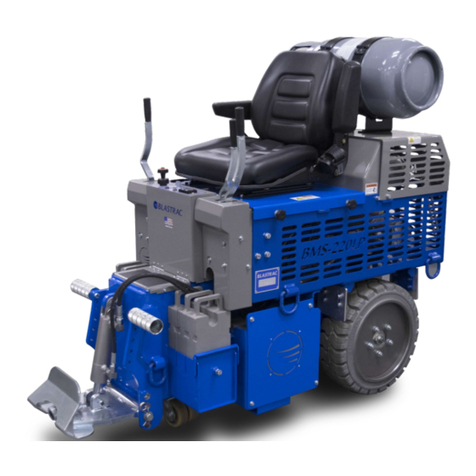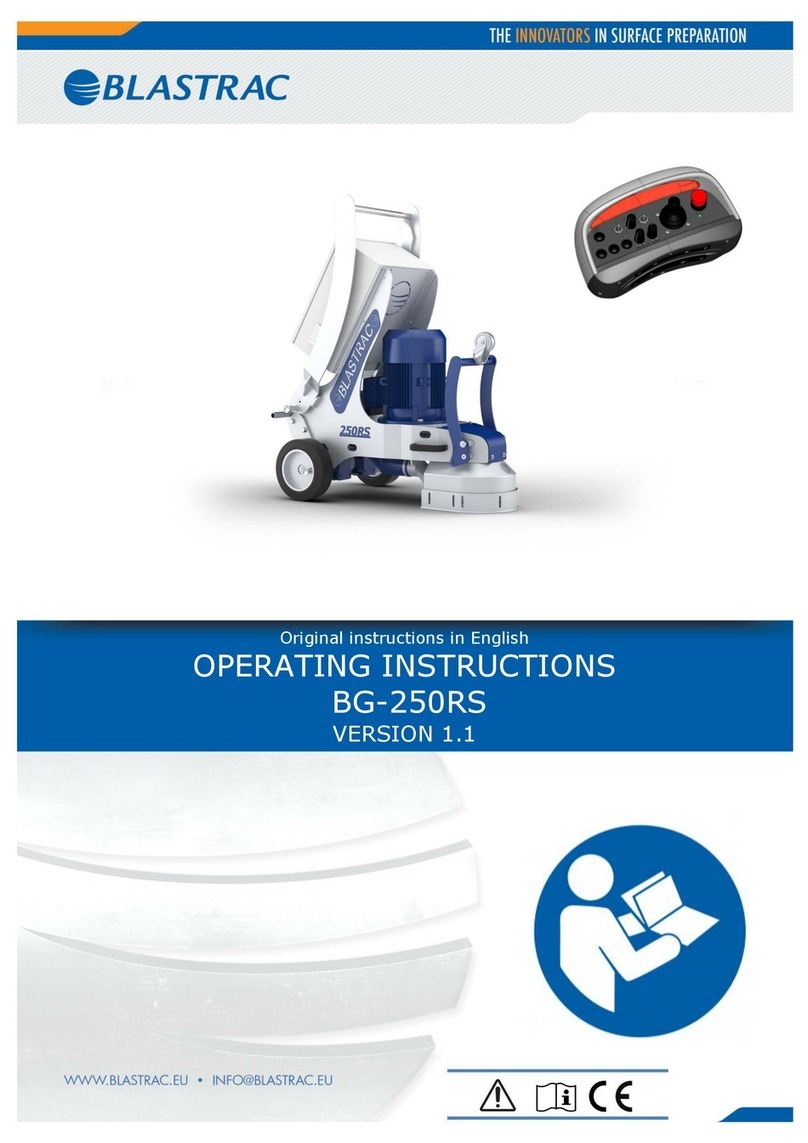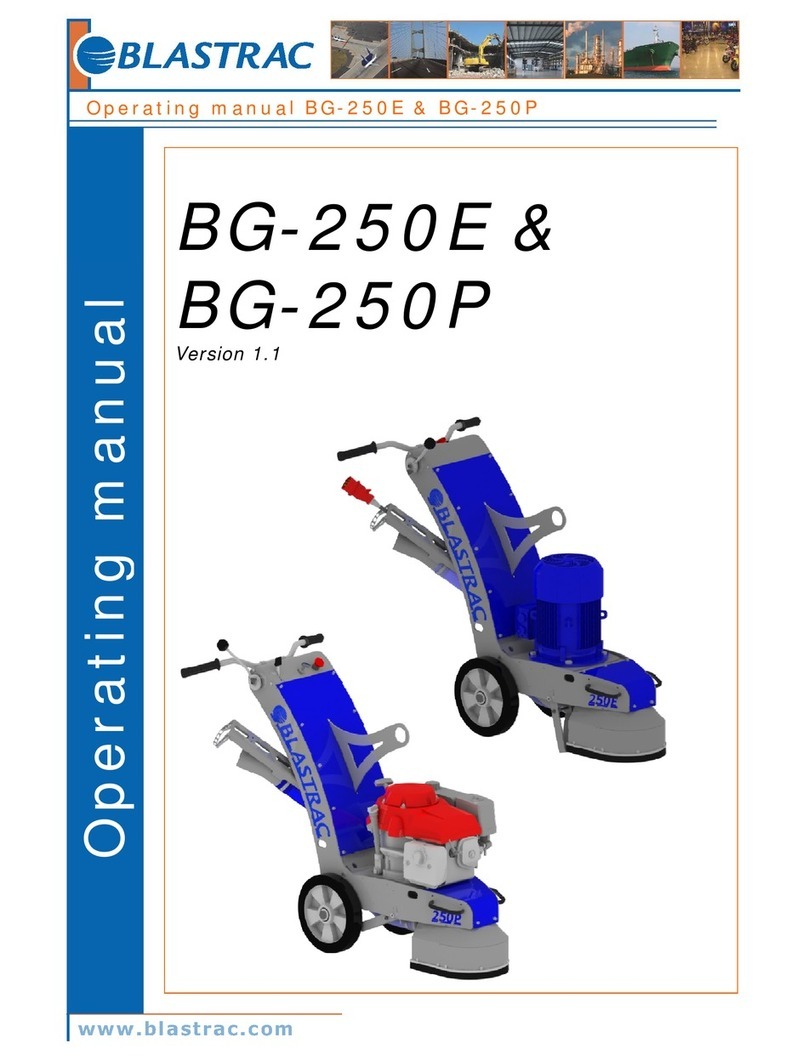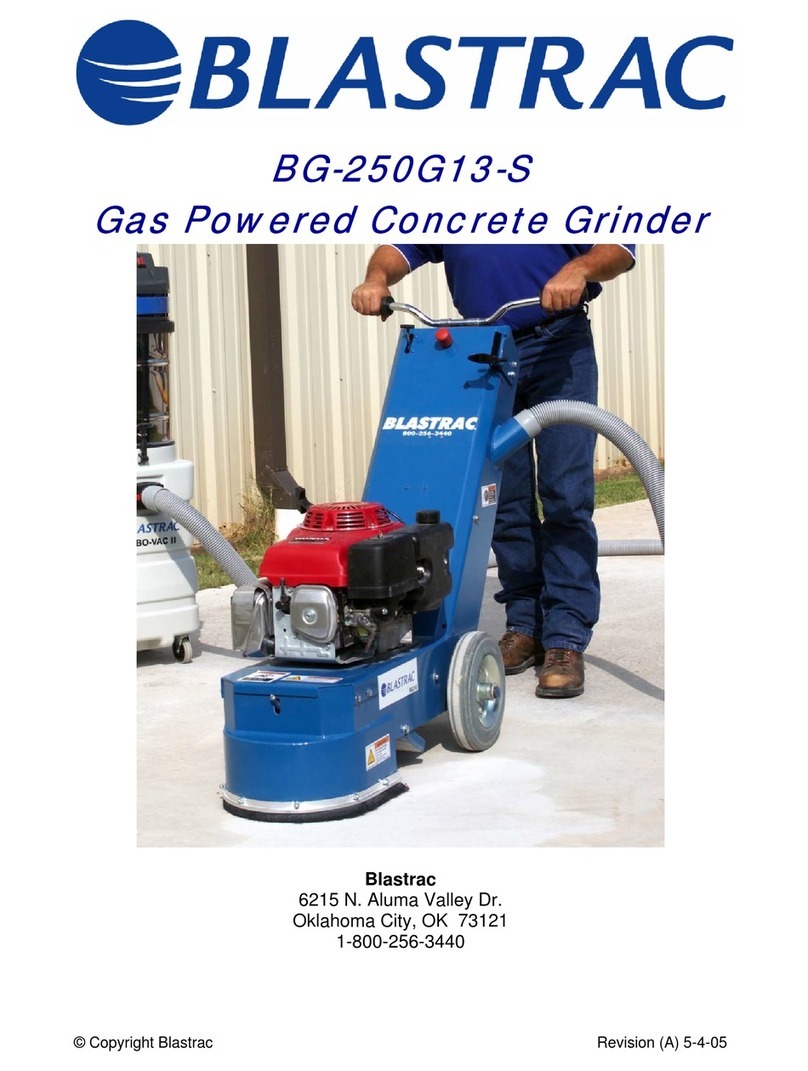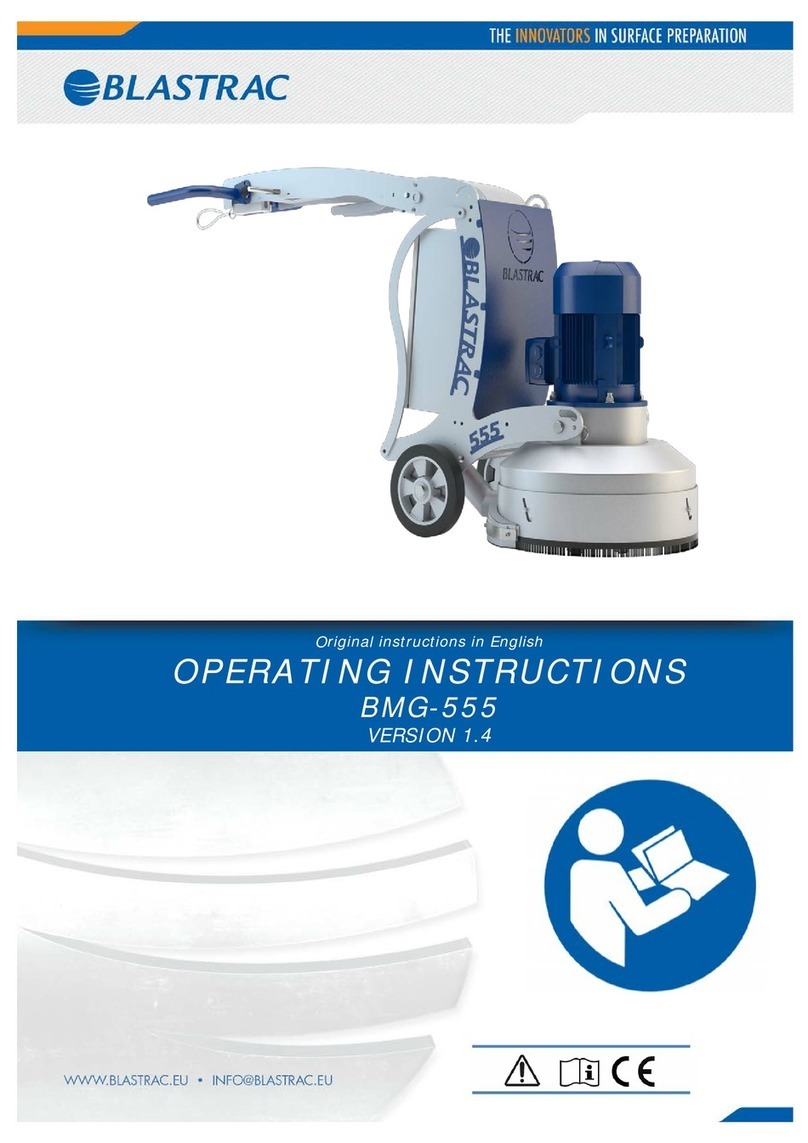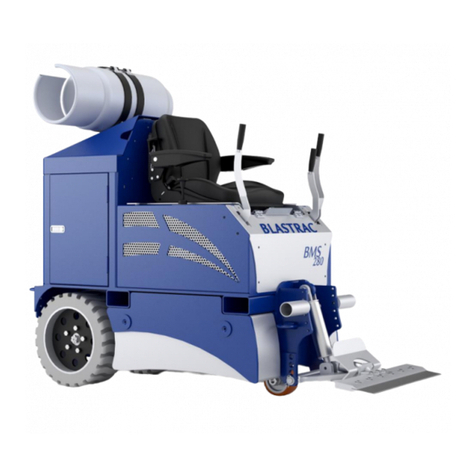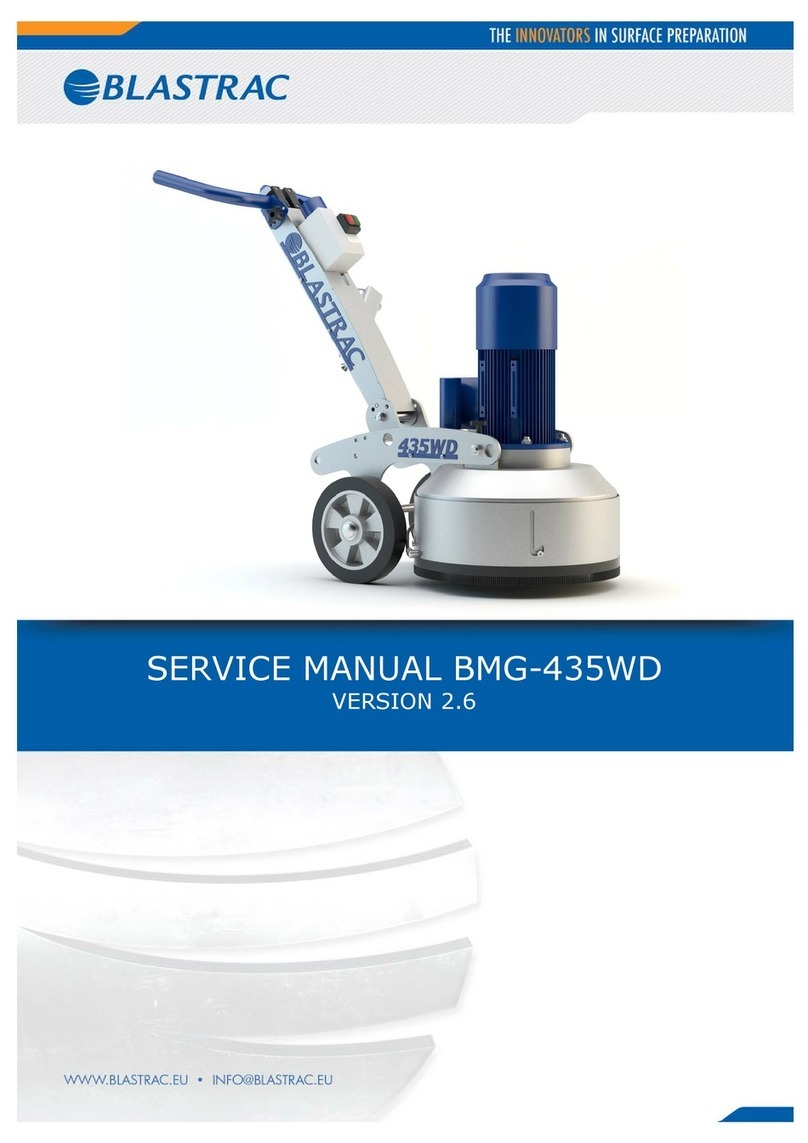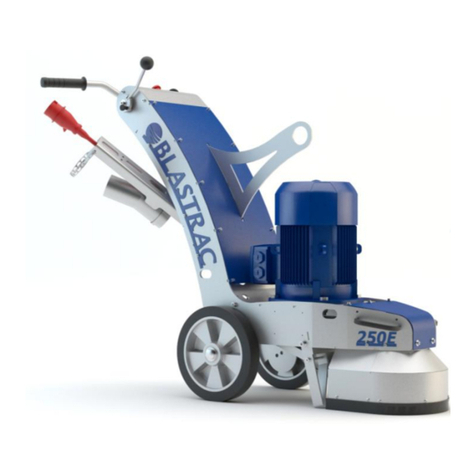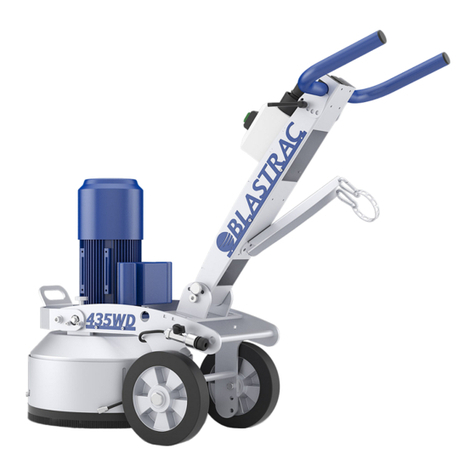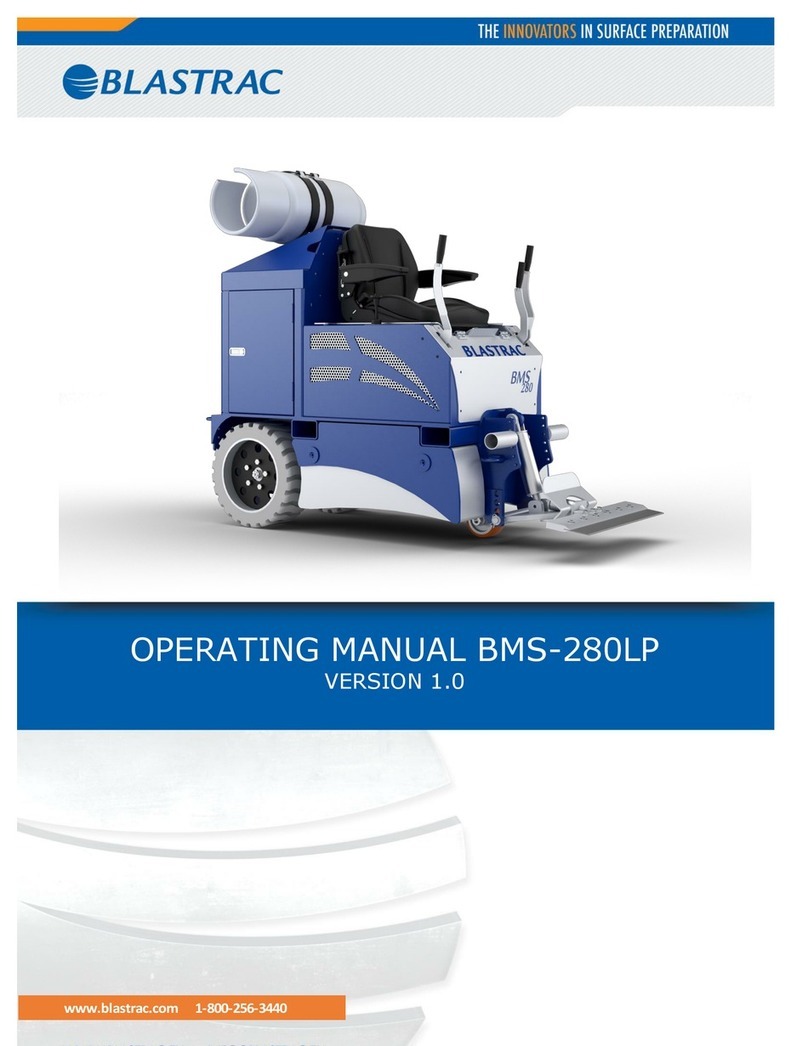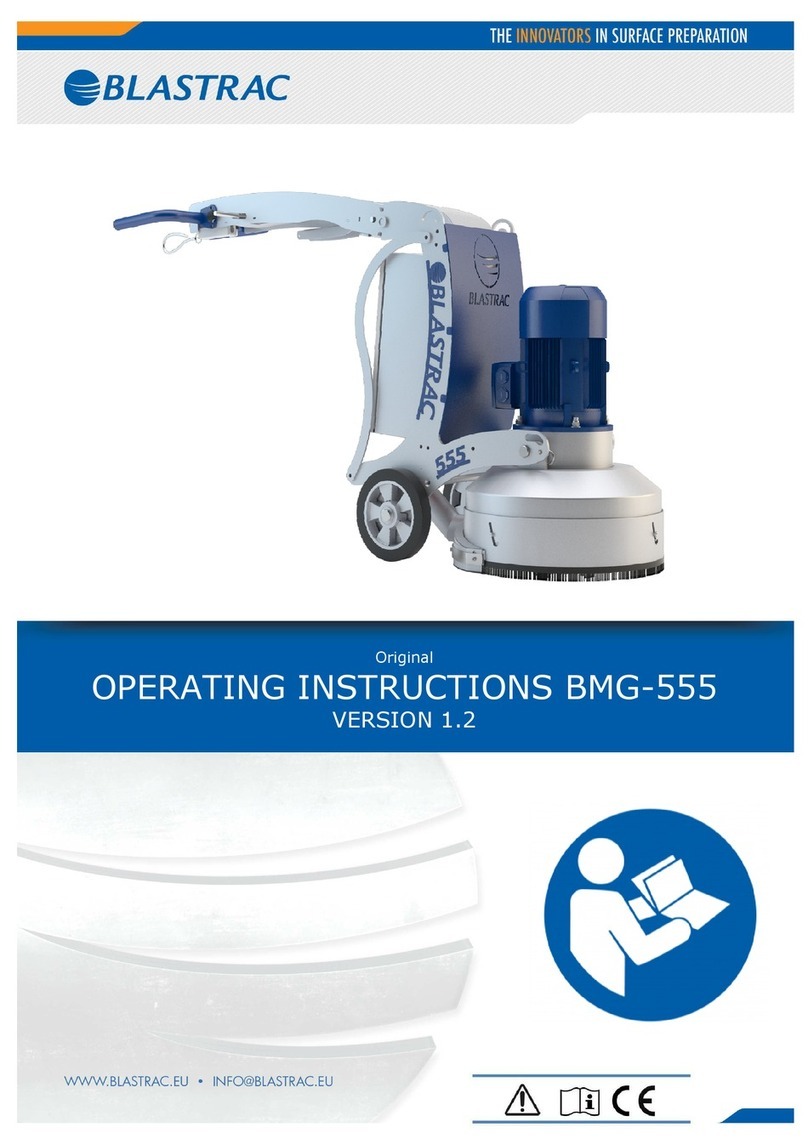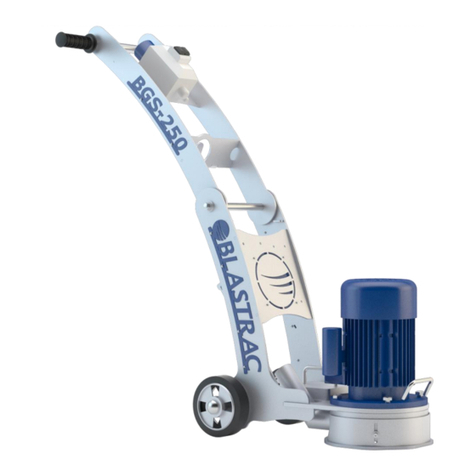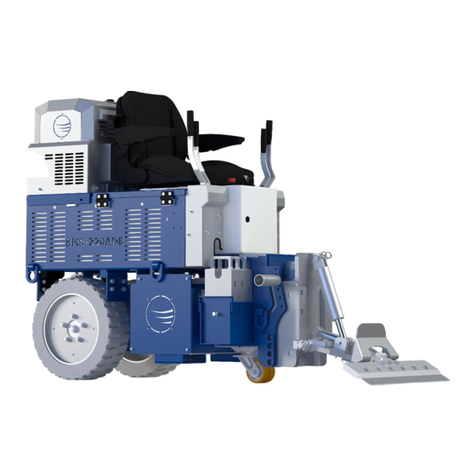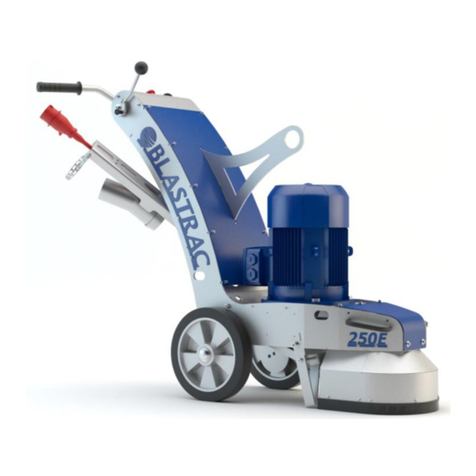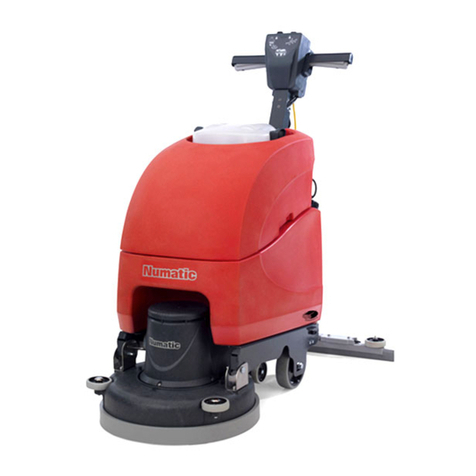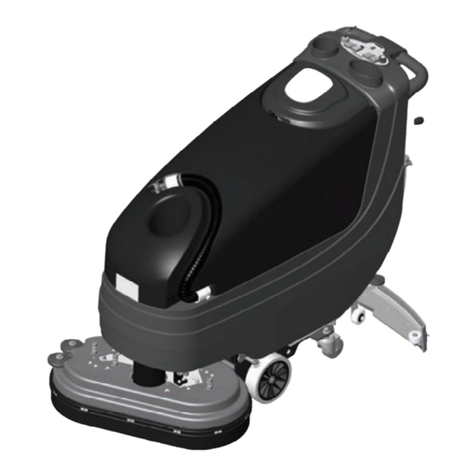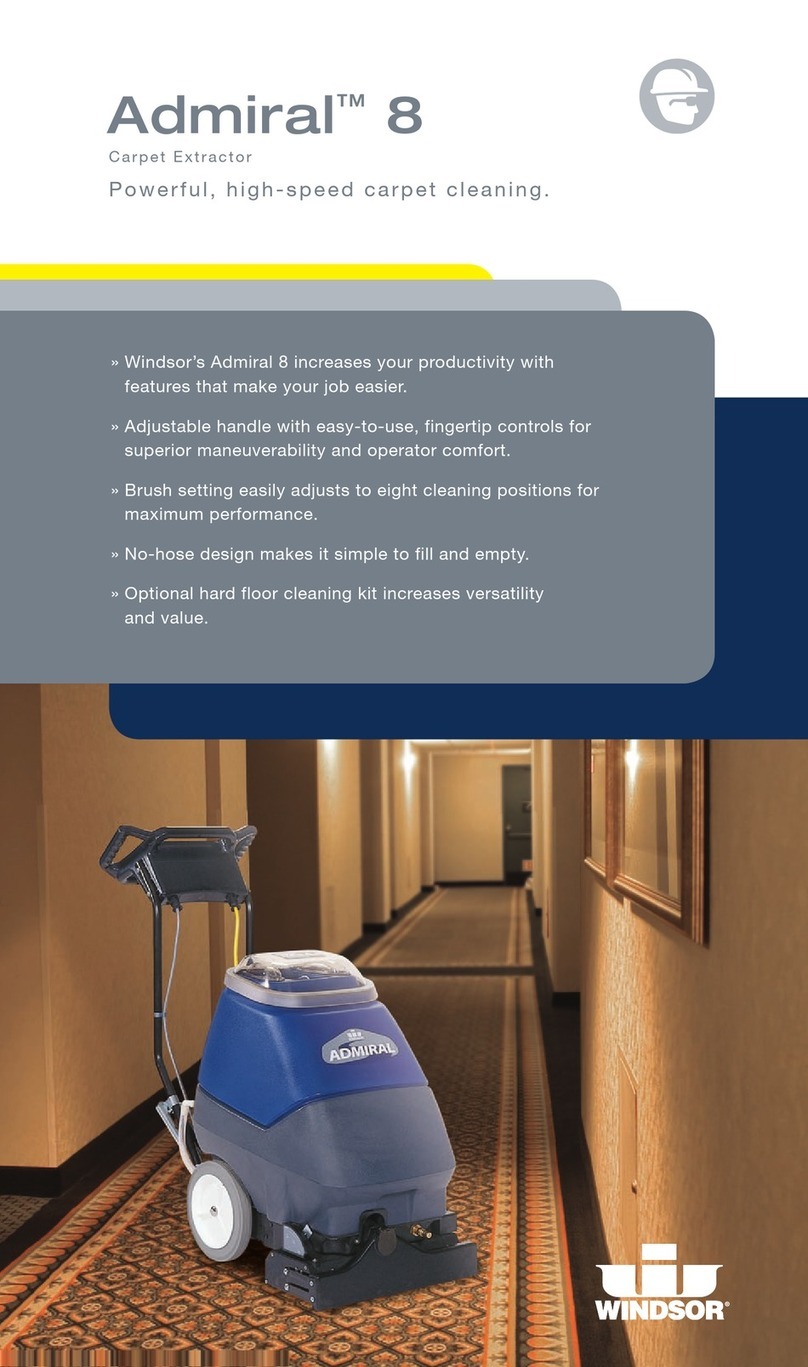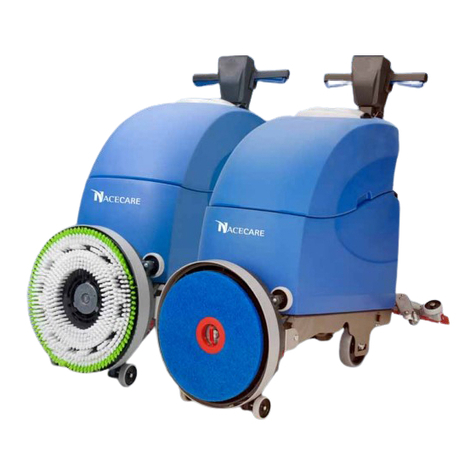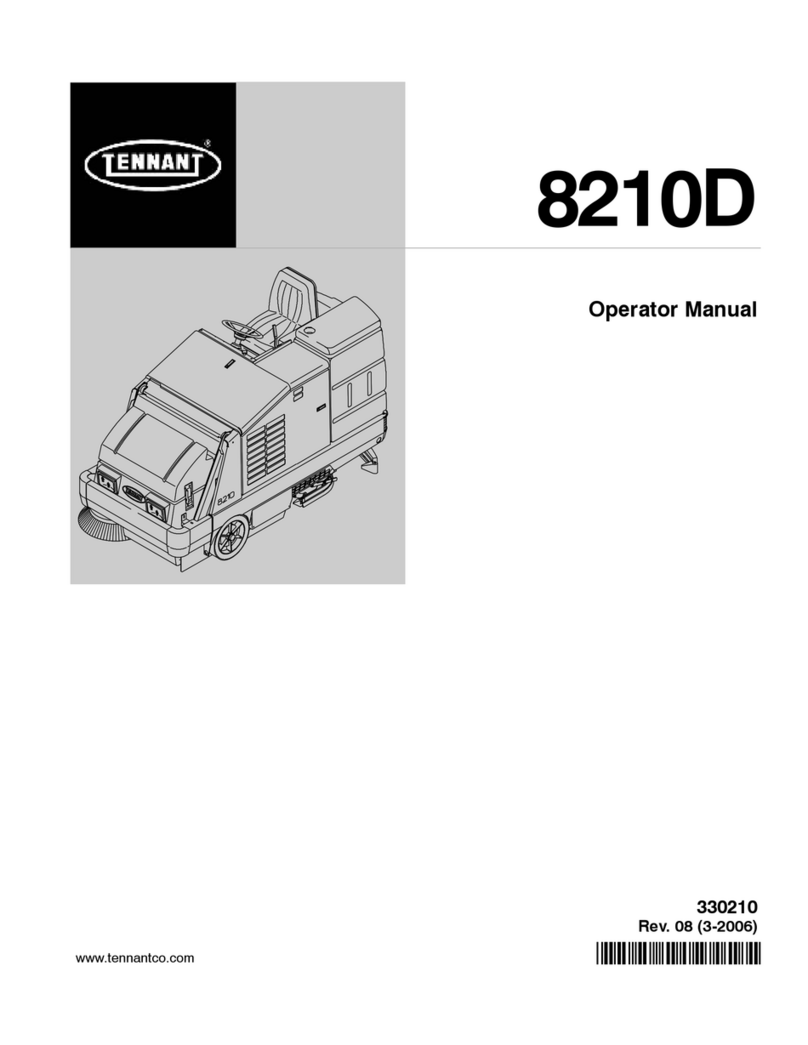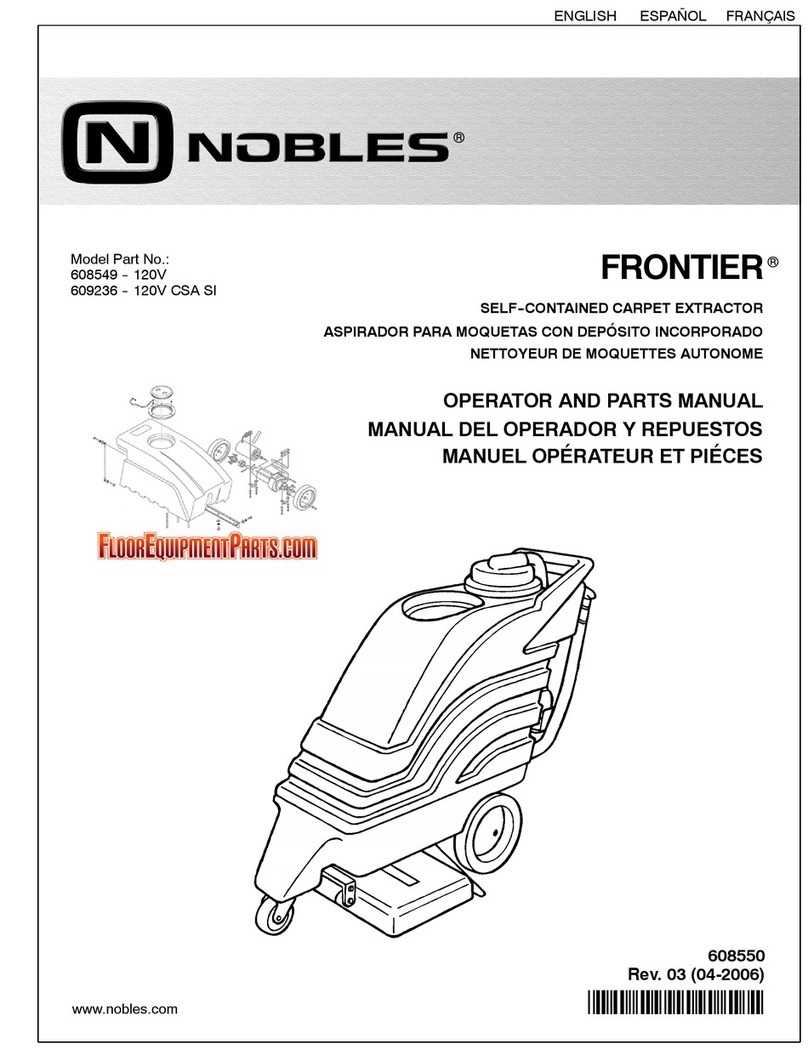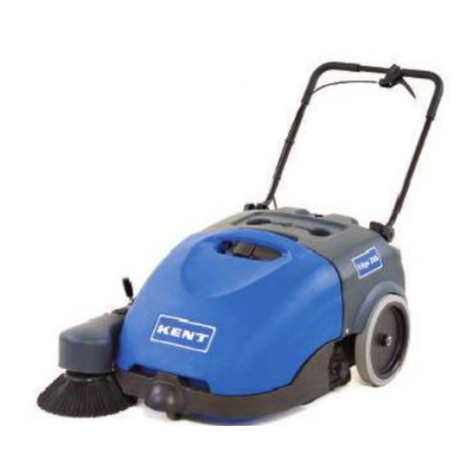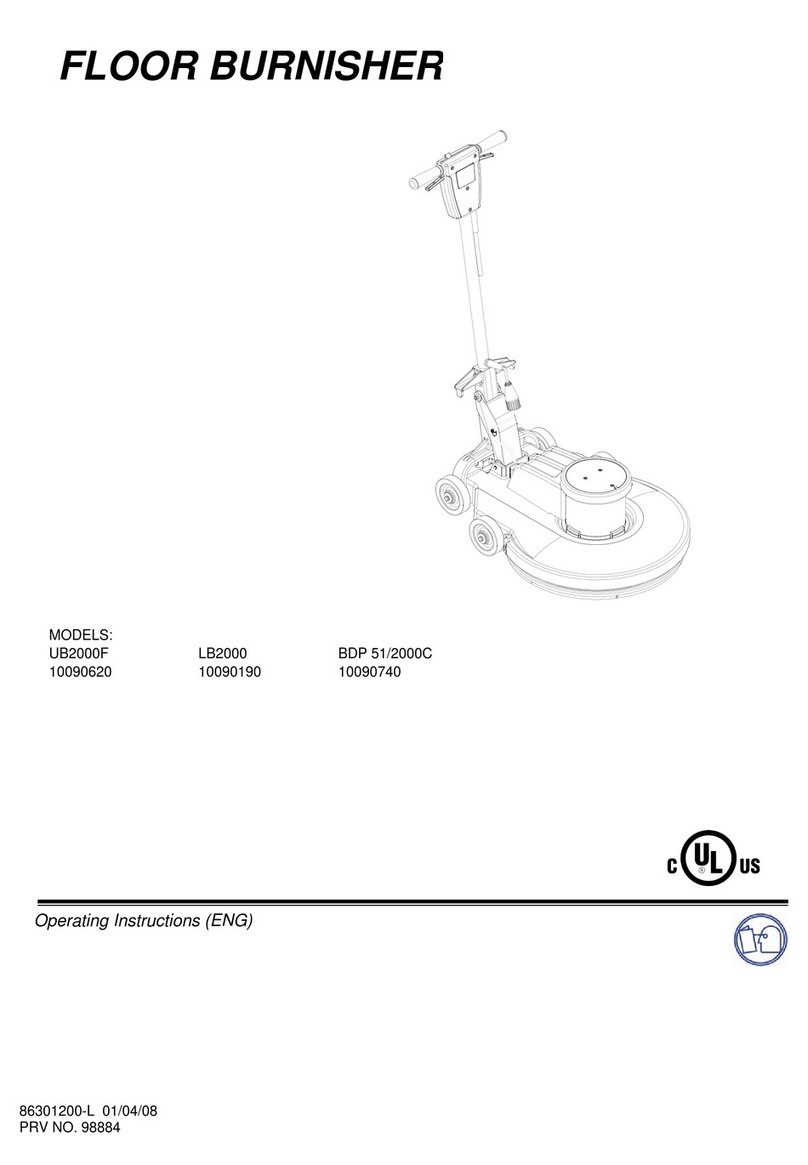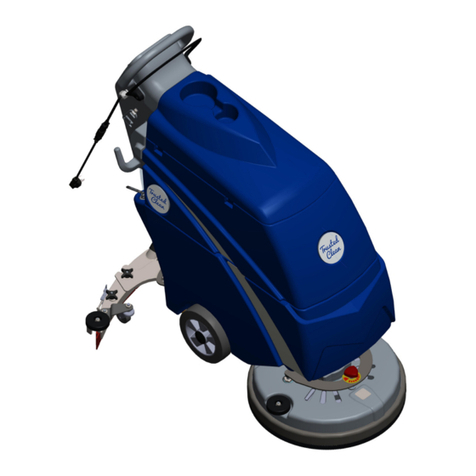
Operating Instructions 1-8DEZ
2
WARNING: ALL OPERATORS AND MAINTENANCE PERSONNEL SHOULD READ
AND UNDERSTAND ALL OF THE OPERATING INSTRUCTIONS PRIOR TO
OPERATING OR MAINTAINING ON THE 1-8DEZ.
These Blastracoperating instructions have been specifically prepared for operating
and maintenance personnel working with the Model 1-8DEZ shot-blasting system. The
information in this manual is intended to provide an understanding of the 1-8DEZ to
minimize safety risks and maximize 1-8DEZ performance.
All operating and maintenance personnel must observe all warnings and precautions
that are listed in this manual for the Model 1-8DEZ. All safety and warning labels
posted on the 1-8DEZ and the instructions included in these operating instructions must
be followed.
This Blastrac®1-8DEZ has been manufactured for specific floor preparation
applications. The engineering design of this airless media blast machine incorporates
several basic elements. These include the airless media blast wheel, the media
recycling system and the dust collection system. As a result of many years of operating
and engineering experience, the features of these machines when used with the proper
operating and maintenance procedures enable them to operate in an efficient and
trouble-free manner.
A thorough understanding of your 1-8DEZ will help ensure that it can be operated
efficiently and with minimized safety risks. No instructions, written or verbal, can be
effective without the use of sound judgment and good work practices in the operation
and maintenance of the 1-8DEZ. The U.S. Department of Labor Occupational Safety &
Health Administration (OSHA) provides standards and regulations relating to the use of
portable tools on construction sites. The operator of this 1-8DEZ should be familiar with,
and understand these Regulations and Standards. These Standards and Regulations
are posted on the OSHA Website at www.osha.gov.
CAUTION: Always keep the abrasive valve control lever in the
off/closed position except when the 1-8DEZ is actually blast
cleaning. Immediately close the abrasive control valve by
releasing the handle- mounted shot valve control if you
experience any irregular or hazardous situations while operating
or maintaining the 1-8DEZ. Unusual situations include, but are
not limited to, loud noise and excessive vibration.
